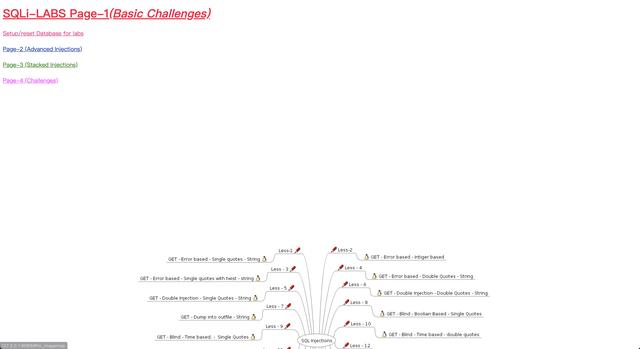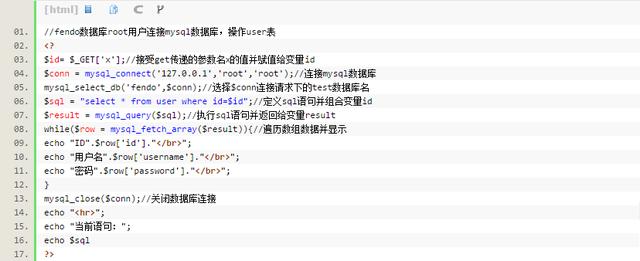SQL语言的查询方法有哪些
SQL语言的查询方法有哪些
这篇文章主要讲解了“SQL语言的查询方法有哪些”,文中的讲解内容简单清晰,易于学习与理解,下面请大家跟着小编的思路慢慢深入,一起来研究和学习“SQL语言的查询方法有哪些”吧!
外键约束
MySQL属于关系型的数据库,表之间可以建立关系,如:学生表和成绩表,在成绩表中添加学生编号引用学生表中的学生编号,这样在成绩表中就不用添加重复的学生信息了,这种关系也叫主外键关系,可以通过设置外键约束实现。
可以在创建表时,添加外键约束来保证表和表之间引用完整性,添加外键后:
在插入外键表数据前,必须先插入主表数据
在删除主表数据前,必须先删除外键表数据
语法:
create table 表名
(
字段名 类型 约束,
... ,
constraint 外键名称 foreign key (外键列) references 主表(主键)
);
代码示例:
use mysql_db;
-- 创建成绩表
drop table if exists tb_score;
create table tb_score
(
score_id int primary key auto_increment,
score_stu_id int,
score int,
score_course varchar(20),
constraint fk_score_stu_id foreign key(score_stu_id) references tb_student(stu_id)
);
内连接查询
在查询时我们经常要把相关的多张表的字段,一起查询出来,如查询学生成绩时,要显示分数和学生姓名。这个时候我们就需要连接查询了,连接查询分为内连接和外连接,我们先学习内连接查询。
内连接查询的特点是:会查询出相关表中都存在的数据。
语法有两种实现方法:
1)select 字段..... from 表1 inner join 表2
on 表1.主键 = 表2.外键;
注意:这里假设表1是主表,内连接表的前后顺序无关
2)select 字段..... from 表1 , 表2
where 表1.主键 = 表2.外键;
代码示例:
-- 查询学生姓名和成绩 方式1
select s.stu_id ,s.stu_name,c.score_course,c.score from tb_score c inner join tb_student s on s.stu_id = c.score_stu_id;
-- 方式2
select s.stu_id ,s.stu_name,c.score_course,c.score from tb_score c , tb_student s where s.stu_id = c.score_stu_id;
效果相同:
外连接查询
外连接分为左外连接和右外连接:
1) 左外连接
连接查询多张表的数据,显示所有左表的数据,右表存在不相符的数据补null。
语法:
select 字段... from 左表 left join 右表
on 主表.主键 = 子表.外键;
代码示例:
-- 左外连接,查询学生姓名和成绩
select s.stu_id,s.stu_name,c.score_course,c.score from tb_student s left join tb_score c on s.stu_id = c.score_stu_id;
-- 查询所有参加过考试的同学
select s.stu_id,s.stu_name,c.score_course,c.score from tb_student s left join tb_score c on s.stu_id = c.score_stu_id where c.score is not null;
-- 查询所有没参加过考试的同学
select s.stu_id,s.stu_name,c.score_course,c.score from tb_student s left join tb_score c on s.stu_id = c.score_stu_id where c.score is null;
2)右外连接
与左连接相反,显示所有右表数据,左表中不相符的数据补null。
语法:
select 字段... from 左表 right join 右表
on 主表.主键 = 子表.外键;
代码示例:
select s.stu_id,s.stu_name,c.score_course,c.score from tb_score c right join tb_student s
on s.stu_id = c.score_stu_id;
子查询
在查询语句中还可以嵌入查询语句,嵌入的查询也叫子查询,子查询将先执行,查询到结果后,父查询可以将此结果作为查询条件再进行一次查询,这样可以解决比较复杂的查询问题。
语法:
select ... from 表 where 字段 比较运算符 (select ... from 表 where 条件);
代码示例:
-- 查询年龄比李四大的学生
select * from tb_student where stu_age > (select stu_age from tb_student where stu_name = '李四');
-- 查询李四的老乡
select * from tb_student where stu_address = (select stu_address from tb_student where stu_name = '李四');
子查询之IN
有时候当子查询中查询结果不止一个的情况下,使用比较运算符会出现错误,这时候我们就需要使用一些关键字来帮助筛选结果。
in关键字的作用是在字段和数据列表中任意一个相等,条件就成立。
代码示例:
-- 查询语文分数考相同的学生,先用子查询查语文的成绩,在用内连接查考过语文的学生姓名和成绩,把成绩进行比较
select stu_name,score_course,score from tb_student inner join tb_score on tb_student.stu_id = tb_score.score_stu_id where score_course='语文' and score in(select score from tb_score where score_course = '语文');
子查询之ALL
all和比较运算符配合使用,如果字段和所有的查询结果都比较成立,结果才成立。
语法:
字段 比较运算 all(查询结果)
代码示例:
-- 查询比所有男学生小的女学生,先查所有男学生的年龄,如果女学生年龄比所有这些年龄大,就查出来
select stu_name,stu_age,stu_gender from tb_student where stu_gender = '女' and stu_age < all(select stu_age from tb_student where stu_gender = '男');
子查询之ANY
any和比较运算符配合使用,如果字段和任意一个查询结果比较成立,则结果成立。
语法:
字段 比较运算 any(查询结果)
代码示例:
-- 查询只要比一个南京学生大的武汉学生
select stu_name,stu_address from tb_student where stu_address = '武汉'
and stu_age > any(select stu_age from tb_student where stu_address='南京');
子查询之Exists
exists表示是否有查询结果,如果没有结果,返回false,有结果则返回true
语法:
exists(查询结果)
-- 查询考过英语的同学,在子查询中需要判断父查询中的学生id是否在子查询中存在
select * from tb_student where
exists(select score_stu_id from tb_score where tb_student.stu_id = tb_score.score_stu_id and score_course = '英语');
感谢各位的阅读,以上就是“SQL语言的查询方法有哪些”的内容了,经过本文的学习后,相信大家对SQL语言的查询方法有哪些这一问题有了更深刻的体会,具体使用情况还需要大家实践验证。这里是恰卡编程网,小编将为大家推送更多相关知识点的文章,欢迎关注!
推荐阅读
-
实用microsoft(sql server 7 教程 怎么配置sqlserver的远程连接)
怎么配置sqlserver的远程连接?SQLServer2008默认是不愿意远程桌面的,如果不是想在本地用SSMS连接远战服务器...
-

如何使用 SQL Server FILESTREAM 存储非结构化数据?
-

安全攻防六:SQL注入,明明设置了强密码,为什么还会被别人登录
-
利用PHP访问MySql数据库以及增删改查实例操作
关于利用PHP访问MySql数据库的逻辑操作以及增删改查实例操作PHP访问MySql数据库˂?php//造连...
-

SQL注入速查表
-

「Web安全」SQL注入的基石
-

每个互联网人才都应该知道的SQL注入
-
MySQL中防止SQL注入
喜欢本文章请关注点赞加转发如何保护数据免受SQL注入攻击?采取措施保护数据免受基于应用程序的攻击,例如SQL注入。千...
-

mybatis中如何防止sql注入和传参
-

SQL注入之环境搭建(二)-PHP+Mysql注入环境搭建
